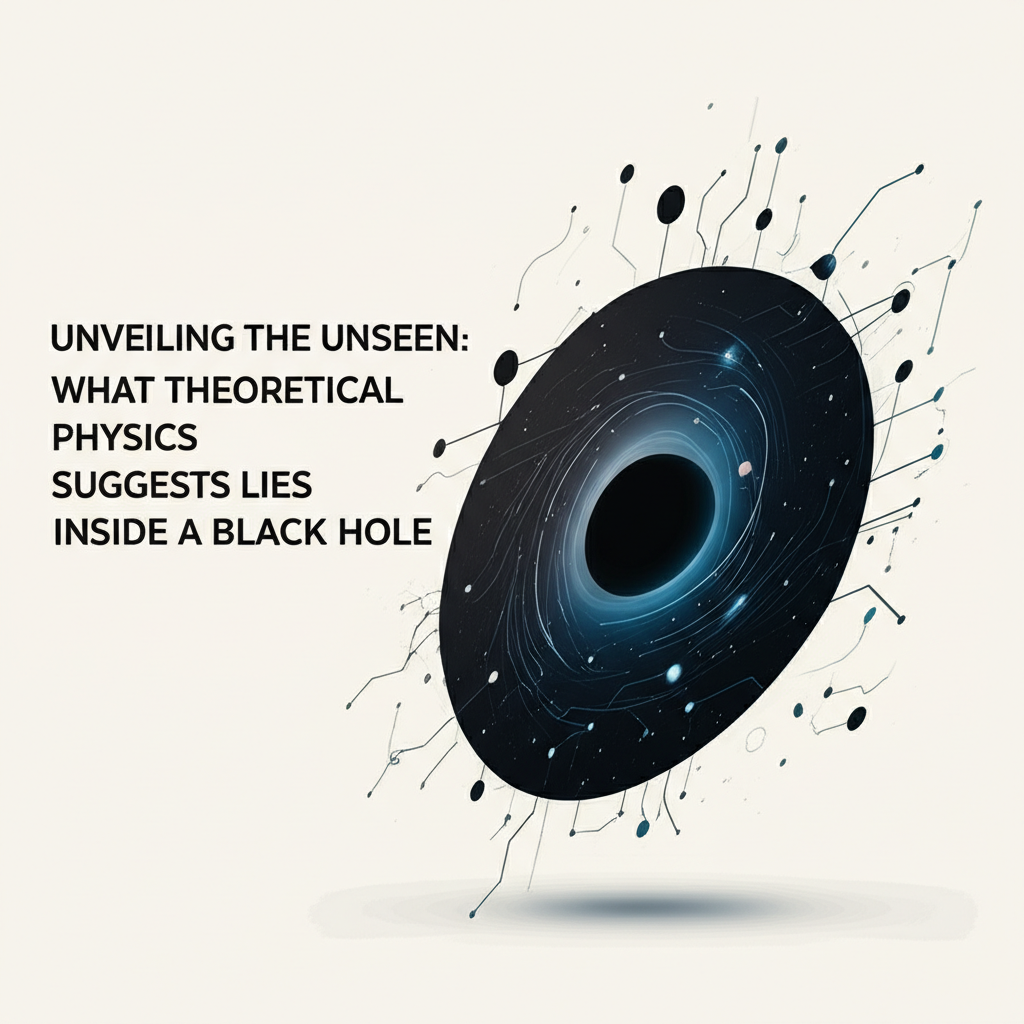Beyond the Horizon: What Theoretical Physics Predicts for a Black Hole's Interior
Peering into the Unknowable with Einstein and Quantum Mechanics

The allure of black holes is undeniable. These cosmic behemoths, with their insatiable gravitational pull, represent some of the most extreme environments in the universe. While direct observation of their interiors remains firmly in the realm of science fiction, the rigorous frameworks of theoretical physics allow us to ask profound questions: What happens once you cross the point of no return? What does the universe look like from 'the other side'? The answers, derived from Einstein's theory of gravity and the enigmatic rules of quantum mechanics, paint a picture that is both bizarre and beautiful.
The Classical View: General Relativity's Abyss
According to Albert Einstein's General Theory of Relativity, a black hole is a region of spacetime where gravity is so strong that nothing—not even light—can escape. This boundary is known as the event horizon. For anyone or anything that crosses this boundary, the future is fixed: an inevitable plunge towards the center.
Inside a non-rotating (Schwarzschild) black hole, spacetime itself becomes incredibly warped. All paths lead towards a single point of infinite density called the singularity. Here, the laws of physics as we know them break down. As an unfortunate observer approaches this point, they would experience extreme tidal forces, often described as 'spaghettification,' where they are stretched vertically and squeezed horizontally until their very atoms are torn apart. Time also behaves strangely; for an observer falling in, they would perceive themselves reaching the singularity in a finite amount of their own time, though from an external perspective, they'd appear to freeze at the event horizon.
For rotating black holes (Kerr black holes), the situation is even more complex. Instead of a point singularity, there might be a ring singularity. This opens up theoretical possibilities of an 'inner event horizon' and potentially even a path to another universe, though these scenarios are often considered unstable and highly speculative due to quantum effects.

The Quantum Conundrum: Information and Firewalls
While General Relativity offers a powerful description, it encounters limits precisely where gravity becomes most extreme—at the singularity. Furthermore, when quantum mechanics is introduced, even at the event horizon, new paradoxes emerge. Stephen Hawking's discovery that black holes emit Hawking radiation and eventually evaporate posed a serious problem known as the information paradox. If a black hole evaporates, what happens to the information (the quantum state) of everything that fell into it? Quantum mechanics dictates that information cannot be truly destroyed.
This paradox has led to a flurry of theoretical proposals about the true nature of a black hole's interior and event horizon:
- • Firewalls: One controversial idea suggests that the event horizon isn't a smooth passage, but rather an energetic 'firewall' that incinerates anything attempting to cross it, thereby destroying information at the boundary.
- • Fuzzballs: String theory proposes that black holes are not empty voids leading to a singularity, but rather 'fuzzballs' – complex, extended objects made of vibrating strings. In this model, there is no true event horizon or singularity in the classical sense, and information is preserved on the surface.
- • ER=EPR: A more radical proposal suggests that the interior of a black hole might be connected to other regions of spacetime via wormholes (Einstein-Rosen bridges), linking entangled quantum particles across vast distances. This intriguing idea hints at a profound connection between quantum entanglement and spacetime geometry.

Beyond the Singularity: Speculative Futures
Some theories go even further, suggesting that the singularity itself might be avoided by quantum effects. Loop Quantum Gravity, another contender for a theory of quantum gravity, proposes that spacetime is granular, preventing infinite densities. Instead of a singularity, matter might undergo a 'quantum bounce' and emerge as a white hole – a theoretical region of spacetime that acts as a time-reversed black hole, from which matter can escape but nothing can enter.
The interior of a black hole, then, could be far more complex than a simple point of no return. It could be a conduit to other regions of the universe, a nexus of quantum information, or even a birthplace for new universes. These are still highly speculative concepts, but they highlight the revolutionary thinking required to reconcile gravity with quantum mechanics.
Why This Theoretical Journey Matters
Exploring the theoretical interior of black holes isn't just an academic exercise; it's a crucial frontier in our quest for a unified theory of everything. Black holes are cosmic laboratories where the fundamental laws of physics are pushed to their limits. Understanding what happens within them helps us to:
- • Reconcile General Relativity and Quantum Mechanics: These two pillars of modern physics famously clash at the quantum scale and within black holes. Finding a consistent description of a black hole's interior is key to bridging this gap.
- • Understand the Nature of Spacetime: Black holes reveal the extreme elasticity and dynamics of spacetime itself.
- • Explore Information and Reality: The information paradox challenges our deepest assumptions about the conservation of information and the fabric of reality.
Each theoretical model, despite its challenges, brings us closer to a more complete understanding of the universe's most profound mysteries.
Conclusion
The inside of a black hole remains an enigma, shielded by the event horizon from direct observation. Yet, through the powerful lens of theoretical physics, we can construct incredible scenarios – from the terrifying singularity of classical relativity to quantum fuzzballs and potential wormholes. These mind-bending theories not only push the boundaries of our imagination but also drive the ongoing quest for a unified understanding of the cosmos. The journey into the heart of a black hole, even if only in our minds, is an essential part of humanity's greatest scientific adventure.
What do you think lies beyond the event horizon? The debate continues!





